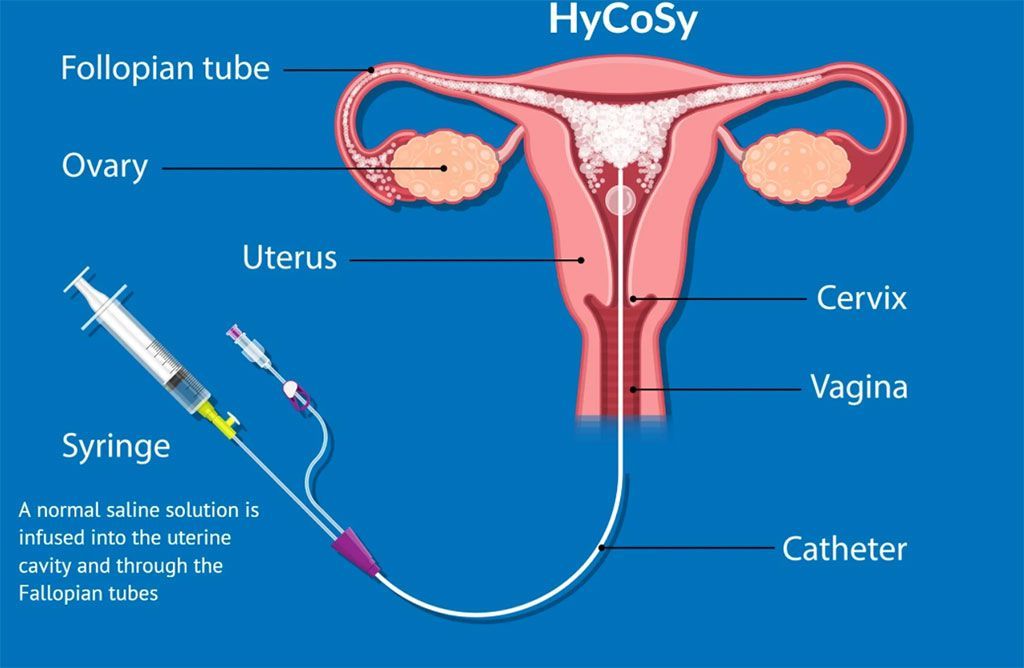Histerosalping is a medical condition that affects the female reproductive system. It involves the inflammation or blockage of the fallopian tubes and uterus, leading to various complications. Understanding this condition is crucial for early detection and appropriate treatment.
Causes of Histerosalping
There are several factors that can contribute to the development of histerosalping. One common cause is pelvic inflammatory disease (PID), which is often caused by sexually transmitted infections. Other potential causes include endometriosis, uterine fibroids, and previous abdominal surgeries. It is important to identify and address these underlying causes to effectively manage histerosalping.

Symptoms of Histerosalping
Recognizing the symptoms of histerosalping is essential for early diagnosis and treatment. While some individuals may not experience any noticeable signs, others may experience pelvic pain, abnormal menstrual bleeding, or difficulty getting pregnant. It is important to consult a healthcare professional if any of these symptoms are present.
Diagnosis of Histerosalping
Accurate diagnosis of histerosalping is crucial for appropriate treatment. Healthcare professionals may perform various diagnostic tests, including a hysterosalpingogram, ultrasound, or laparoscopy. These tests help identify any abnormalities or blockages in the fallopian tubes and uterus, allowing for targeted treatment options.
Treatment Options for Histerosalping
There are several treatment options available for histerosalping, depending on the severity of the condition and the individual’s reproductive goals. Medications, such as antibiotics or hormonal therapies, may be prescribed to manage underlying infections or hormonal imbalances. In some cases, minimally invasive procedures, such as tubal cannulation or hysteroscopic surgery, may be recommended to remove blockages or repair damaged tissues. In more severe cases, surgical interventions, such as fallopian tube removal or in vitro fertilization (IVF), may be necessary. It is important to consult with a healthcare professional to determine the most appropriate treatment plan.
Prevention of Histerosalping
While it may not always be possible to prevent histerosalping, certain measures can reduce the risk of developing the condition. Practising safe sex and using barrier methods of contraception can help prevent sexually transmitted infections that may lead to pelvic inflammatory disease. Additionally, maintaining a healthy lifestyle, including regular exercise and a balanced diet, can support overall reproductive health.
Complications Associated with Histerosalping
Histerosalping can lead to various complications if left untreated. These complications may include chronic pelvic pain, ectopic pregnancy, or infertility. Seeking early diagnosis and appropriate treatment can help minimize the risk of these complications and improve overall reproductive health.
Support and Resources for Histerosalping
Individuals affected by histerosalping can benefit from accessing support and resources. Support groups, online forums, and healthcare professionals specializing in reproductive health can provide valuable information, guidance, and emotional support throughout the journey. It is important to reach out and connect with others who may be experiencing similar challenges.
Conclusion
Histerosalping is a medical condition that affects the female reproductive system, involving the inflammation or blockage of the fallopian tubes and uterus. Understanding the causes, symptoms, diagnosis, treatment options, prevention strategies, complications, and available support and resources is essential for individuals affected by histerosalping. By raising awareness and promoting early intervention, we can improve the overall reproductive health and well-being of those impacted by this condition.
FAQs
What is histerosalpingography?
Histerosalpingography is a diagnostic procedure that uses X-rays to examine the uterus and fallopian tubes. It helps to determine any structural abnormalities or blockages that may be causing infertility or other reproductive issues.
How is histerosalpingosonography different from histerosalpingography?
Histerosalpingosonography is a similar diagnostic procedure to histerosalpingography, but it uses ultrasound instead of X-rays. It provides a detailed image of the uterus and fallopian tubes, without exposing the patient to radiation.
What can histerosalpingography detect?
Histerosalpingography can detect various conditions such as uterine fibroids, polyps, scar tissue, and abnormalities in the shape or size of the uterus or fallopian tubes. It can also identify blockages or obstructions in the fallopian tubes.
Is histerosalpingography painful?
Histerosalpingography can cause some discomfort or cramping during the procedure. However, the level of pain varies from person to person. Your doctor may recommend taking pain medication before the procedure to minimize any discomfort.
How long does a histerosalpingography procedure take?
A histerosalpingography procedure usually takes around 15 to 30 minutes to complete. However, the entire process, including preparation and recovery time, may take a couple of hours.
Is histerosalpingography safe?
Histerosalpingography is generally considered safe. However, like any medical procedure, it carries some risks, such as infection, allergic reaction to the contrast material, or damage to the uterus or fallopian tubes. Your doctor will discuss the potential risks and benefits with you before the procedure.
Can histerosalpingography increase fertility?
In some cases, histerosalpingography can help improve fertility. It can identify and sometimes clear blockages in the fallopian tubes, allowing for better chances of conception. However, it does not guarantee pregnancy, as other factors may also contribute to infertility.
Is there any special preparation required for histerosalpingography?
Yes, there are usually some preparation steps before histerosalpingography. Your doctor will provide specific instructions, but typically, you may need to avoid sexual intercourse for a few days before the procedure and take antibiotics to prevent infection.
What happens after histerosalpingography?
After histerosalpingography, you may experience some mild cramping or spotting for a day or two. Your doctor will discuss the results of the procedure with you and recommend any further tests or treatments based on the findings.
Can I resume normal activities after histerosalpingography?
Most people can resume their normal activities immediately after histerosalpingography. However, your doctor may advise you to avoid strenuous exercise or sexual intercourse for a short period, depending on your situation.




